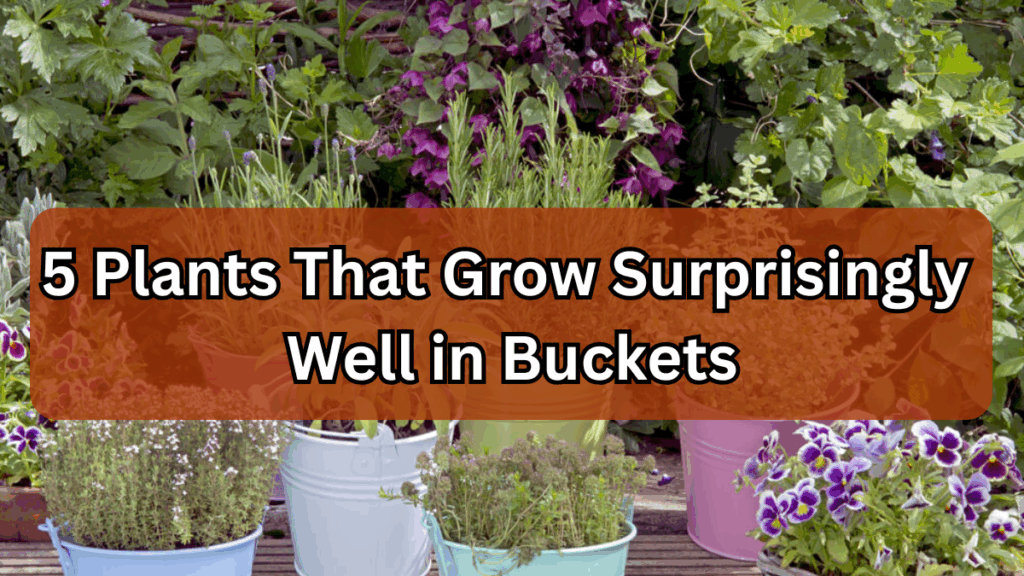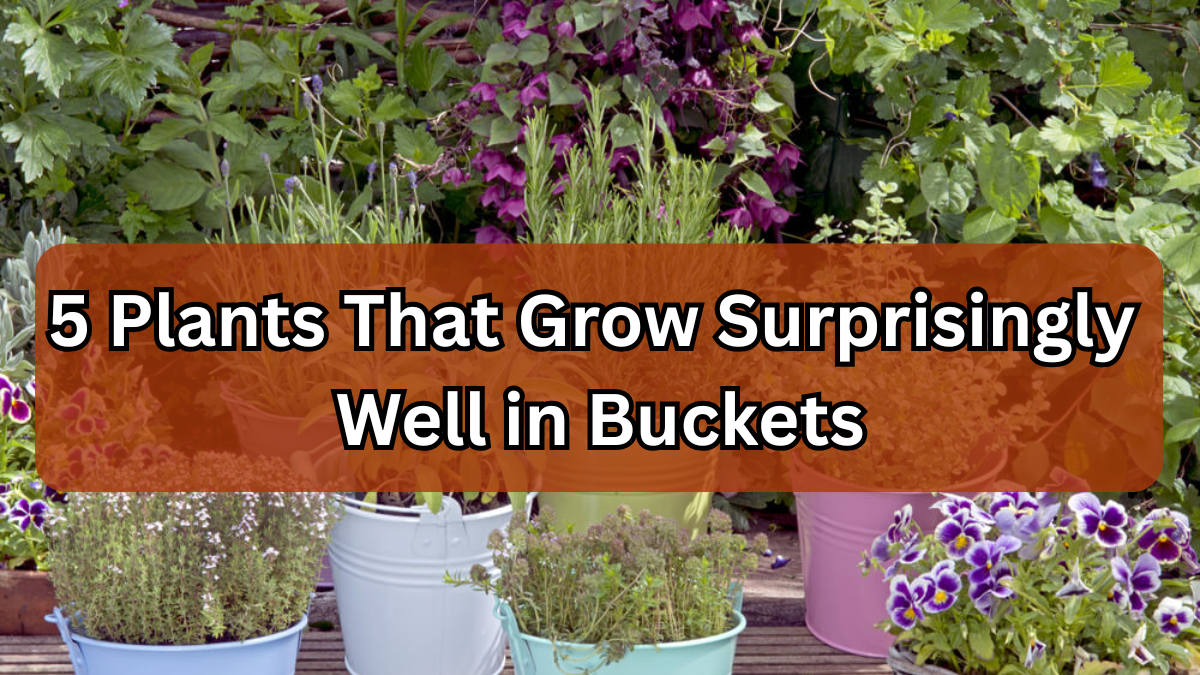Growing your own vegetables doesn’t always require a backyard garden. Even if space is limited, you can cultivate a thriving mini-garden using 5-gallon buckets. With the right care, these containers can support a surprising variety of crops, from juicy tomatoes to hearty potatoes. Here’s a guide to plants that grow in buckets effectively.

Why Choose 5-Gallon Buckets for Gardening?
Buckets are an excellent option for container gardening because they:
-
Are affordable and easy to find
-
Can be moved to optimize sunlight exposure
-
Reduce soil-borne diseases common in ground gardening
-
Offer excellent control over soil, water, and nutrients
-
Make gardening possible on patios, balconies, or small urban spaces
Tip: Always ensure proper drainage by drilling holes at the bottom of your bucket to prevent root rot and waterlogging.
Tomatoes
Tomatoes are one of the easiest and most rewarding plants that grow in buckets.
-
Bucket size: 5-gallon buckets work best
-
Soil: Use nutrient-rich potting mix with compost
-
Sunlight: 6–8 hours daily
-
Watering: Keep soil consistently moist, but avoid overwatering
Pro Tip: Place a small stake or cage in the bucket to support tomato plants as they grow tall.
Peppers
Bell peppers and chili peppers thrive in container gardens.
-
Bucket size: 5-gallon buckets
-
Soil: Well-draining potting mix
-
Sunlight: 6–8 hours daily
-
Watering: Moderate; allow the top inch of soil to dry between watering
Peppers benefit from extra warmth, so position your bucket in a sunny spot for faster growth.
Potatoes
Potatoes are surprisingly easy to grow in buckets and even fun for kids to harvest.
-
Bucket size: 10–15 gallons preferred, but 5-gallon can work for small varieties
-
Soil: Loose, well-draining soil
-
Planting: Start with seed potatoes; cover with 4 inches of soil and add more as they grow
-
Watering: Keep soil evenly moist
Tip: Use a bucket with drainage holes to prevent water accumulation, which can rot the tubers.
Herbs
Fresh herbs like basil, mint, parsley, and cilantro thrive in 5-gallon buckets.
-
Sunlight: 4–6 hours daily
-
Watering: Regular, moderate watering
-
Benefits: Perfect for cooking, easy to maintain, and repel pests naturally
Herbs can even be grown indoors on a sunny windowsill if outdoor space is limited.
Leafy Greens
Spinach, lettuce, and kale flourish in buckets and provide a continuous harvest.
-
Bucket size: 5-gallon buckets
-
Soil: Rich, well-draining soil
-
Sunlight: 4–6 hours daily
-
Watering: Keep soil evenly moist
Tip: Succession planting—planting new seeds every few weeks—ensures a steady supply of fresh greens.
Quick Bucket Gardening Guide
| Plant | Bucket Size | Sunlight | Watering | Notes on Drainage |
|---|---|---|---|---|
| Tomatoes | 5-gallon | 6–8 hours | Keep soil moist | Drill multiple holes |
| Peppers | 5-gallon | 6–8 hours | Moderate | Ensure good drainage |
| Potatoes | 10–15 gallon | 6 hours | Evenly moist | Critical to avoid rot |
| Herbs | 5-gallon | 4–6 hours | Regular, moderate | Use perforated bucket |
| Leafy Greens | 5-gallon | 4–6 hours | Keep soil moist | Avoid waterlogging |
Tips for Success with Plants in Buckets
-
Always use a high-quality potting mix for nutrients
-
Fertilize periodically with organic compost
-
Rotate buckets if sunlight is uneven
-
Keep an eye out for pests and remove them manually
By following these simple practices, you can enjoy fresh, homegrown produce even in the smallest spaces.
FAQs
Q1: Can I grow multiple plants in one 5-gallon bucket?
A: It depends on the plant. Leafy greens or herbs can be grown together, but larger crops like tomatoes or potatoes need separate buckets to avoid overcrowding.
Q2: How often should I water bucket plants?
A: Water when the top inch of soil feels dry. Ensure proper drainage to prevent root rot.
Q3: Are 5-gallon buckets suitable for winter planting?
A: Buckets can be moved indoors or to a sheltered area during frost. Insulate the bucket for colder climates.
Q4: Can I reuse buckets for multiple planting seasons?
A: Yes, but clean and disinfect them before reuse to avoid disease transfer between crops.
Click here to learn more
